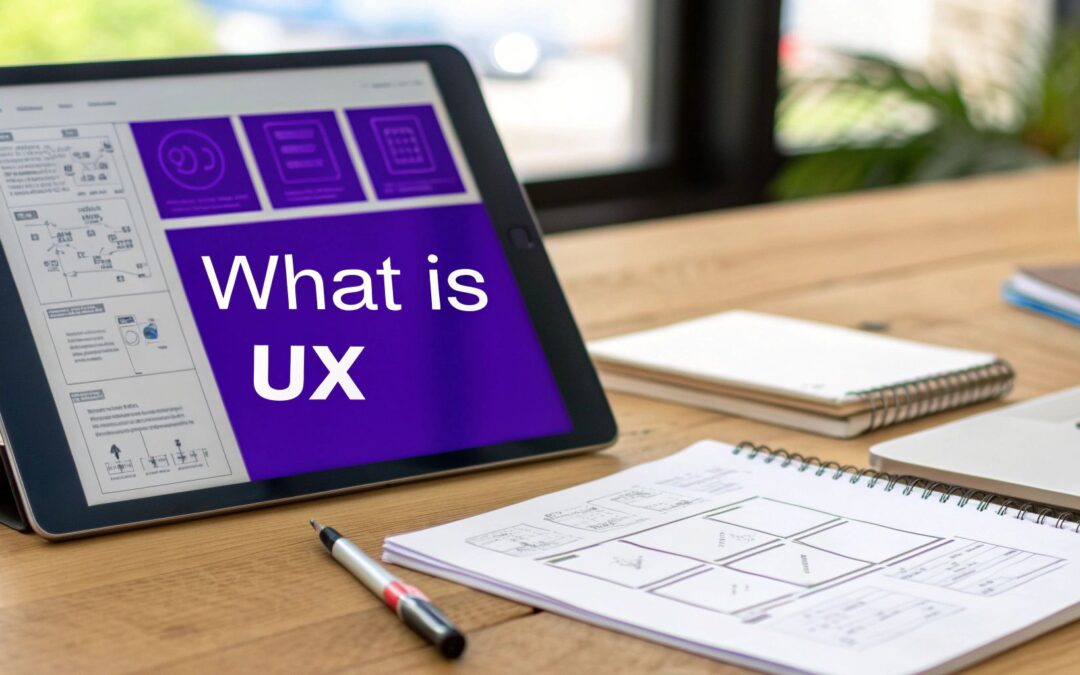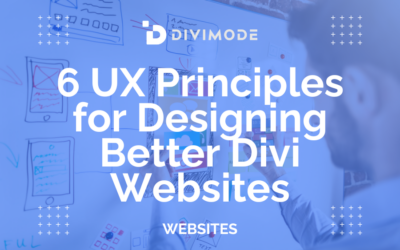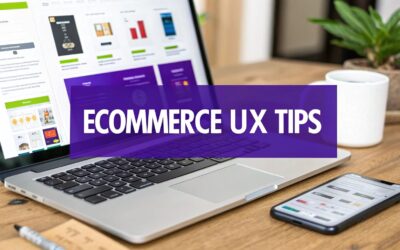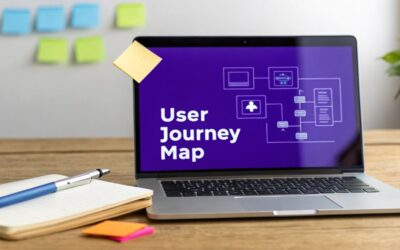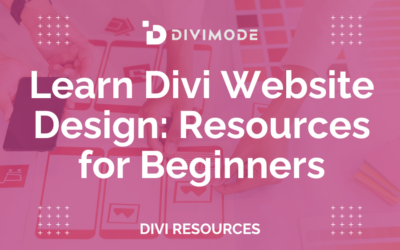Ever heard the term User Experience (UX) design? It’s the art and science of making products, services, and systems that just work for people. This isn't just about a pretty interface; it covers the entire journey a person has with a product, from the first time they hear about it to the moment they achieve their goal with it.
Ultimately, great UX is about making technology feel intuitive, helpful, and maybe even a little bit delightful.
Understanding User Experience Design Beyond Buzzwords

Think of a UX designer as the architect of a user's entire journey. They're obsessed not just with how a product looks, but how it feels to use. Their job is to answer the tough questions: Can people navigate this app easily? Does this website actually solve a real-world problem? Is the checkout process a breeze or a total nightmare?
To get a real sense of what UX design is, let's step away from the screen and think about a local coffee shop. The "user experience" isn't just the taste of the coffee. It’s the whole package:
- How easily did you find the shop online?
- Was the menu board clear and easy to read?
- Did the line from ordering to pickup make logical sense?
- Were the chairs comfortable enough to make you want to stay?
In the digital world, the principles are the same. UX is a discipline built on a deep foundation of empathy, blending psychology, detailed research, and sharp design skills to become a fierce advocate for the person on the other side of the screen.
The Origins of User-Centered Thinking
While cognitive scientist Don Norman officially coined the term "User Experience" while working at Apple in the 1990s, the core ideas have been around for centuries. Think about ancient concepts like Feng Shui, which is all about arranging an environment to create a harmonious flow between people and their surroundings.
This long history of optimizing human interaction laid the groundwork for modern UX. Over time, these foundational ideas grew into a formal discipline, evolving to tackle the challenges of both digital and physical products. You can dive deeper into the complete history of UX and its evolution to see how we got here.
Distinguishing UX from UI
One of the biggest points of confusion in the design world is the difference between User Experience (UX) and User Interface (UI). They're often mentioned together and are deeply connected, but they play very different roles.
Simply put, UX is about the overall journey and how it feels, while UI is about the specific visual and interactive elements that make up that journey.
To make this crystal clear, here’s a quick breakdown.
UX Design vs UI Design At a Glance
| Aspect | UX Design (The Journey) | UI Design (The Vehicle) |
|---|---|---|
| Focus | The overall feel of the experience and solving the user's problem. | The visual layout, graphic design, and interactive elements. |
| Goal | To make the product or service useful, usable, and enjoyable. | To make the interface aesthetically pleasing and visually clear. |
| Analogy | The blueprint for a house, focusing on flow and functionality. | The paint, furniture, and fixtures that decorate the house. |
As you can see, UX is the strategic blueprint, and UI is the detailed execution of the visuals. You can’t have a great product without both working together seamlessly. One builds the foundation, and the other makes it a place people want to be.
The Pillars of Great User Experience Design
Great UX doesn't just happen by accident. It's a discipline built on a handful of foundational principles that steer every design decision. These pillars are what make a product not just functional but also effective, inclusive, and genuinely enjoyable for the people using it. To really get a handle on what UX design is, you have to understand these core ideas.
Think of usability as the ultimate measure of clarity. Picture yourself walking into a perfectly designed airport. The signage is so intuitive that you float from the check-in counter to your gate without a single moment of confusion. A usable website or app gives you that exact same feeling of effortless direction, making every task feel simple and logical.
Next up is accessibility. This is all about making sure that airport experience is just as seamless for someone in a wheelchair or a person with a visual impairment. In the digital world, accessibility means designing products that everyone can use, regardless of their physical or cognitive abilities.
"To design is to solve human problems by identifying them and executing the best solution."
– Ivan Chermayeff, Designer & Co-founder of Chermayeff & Geismar
These concepts aren't brand new. In fact, many of the core tenets of modern UX were first hashed out back in the 20th century. Industrial designer Henry Dreyfuss, in his 1955 book Designing for People, talked about safety, comfort, and efficiency in ways that are still incredibly relevant today. He was a firm believer that great design should make people feel secure and happy—a philosophy that perfectly set the stage for modern user-centered design. You can learn more about the rich history of UX design and its early pioneers.
Connecting with Human Psychology
Beyond just getting the job done, great UX taps into human psychology to forge a real connection. It’s about more than just helping someone complete a task; it's about how they feel while they're doing it. This means understanding things like cognitive load, attention spans, and emotional triggers to design interfaces that work with our brains, not against them.
This is where desirability comes into play. It's the emotional hook—that special quality that makes a product not just useful, but a genuine pleasure to interact with. A desirable product feels satisfying, elegant, or even fun, leaving you with a positive vibe that makes you want to come back for more.
These principles form a powerful framework for creating digital experiences that truly resonate. When you weave them together, you can build products that are:
- Useful: Solves a real problem for the user.
- Usable: Easy and intuitive to get around.
- Accessible: Can be used by people with a wide range of abilities.
- Desirable: Creates a positive emotional connection.
All these elements have to work in harmony to create a cohesive and satisfying experience. For a deeper dive into putting these ideas into practice, check out our guide on essential UX principles for designing better Divi websites. At the end of the day, the goal is to build products that feel like they were made with a deep respect and understanding for the person on the other side of the screen.
Walking Through the UX Design Process
So, how does a great user experience actually come to life? It’s not some sudden flash of genius. It’s a structured, cyclical journey that puts the user at the very center of every single decision.
Think of the UX design process less like a rigid assembly line and more like a detective’s investigation. The goal is to uncover clues, test out different theories, and slowly zero in on the perfect solution.
This process is intentionally iterative, meaning designers repeat the stages, refining their work with each pass. It's a loop of learning and improving, not a sprint to a finish line. This ensures the final product isn’t just built on a designer’s assumptions but is actually validated by real user needs and behaviors.
Stage 1: The Research and Discovery Phase
Every great design project starts with one thing: understanding people. The research phase is all about gathering clues to build a deep sense of empathy for the end-user. Designers act like investigators, using all sorts of methods to uncover a user’s true problems, motivations, and pain points.
This phase is absolutely critical. It prevents teams from sinking time and money into building something nobody actually wants or needs. The infographic below shows a user interview in action—one of the best ways to get these foundational insights.

By directly listening to and observing users, designers can move past their own biases and ground their work in real-world evidence.
Key activities in this stage include:
- User Interviews: One-on-one chats that dig into qualitative data about user experiences and feelings.
- Surveys: A great way to collect quantitative data from a bigger audience to spot trends and patterns.
- Competitor Analysis: Sizing up existing products to understand market standards and find opportunities to do something better.
The insights from this stage often get distilled into super helpful documents like user personas (fictional characters representing a core user group) and journey maps (visuals that map out a user's process). These tools keep the whole team aligned and laser-focused on who they're designing for.
Stage 2: Ideation and Prototyping
Armed with a solid understanding of the user and the problem, it’s time to get creative. The ideation phase is where designers brainstorm a whole spectrum of potential solutions. No idea is too out there at this point; the goal is to generate as many possibilities as you can before narrowing things down.
Once the most promising ideas are picked out, they move into prototyping. A prototype is basically an early, testable model of the product. It can be anything from a simple paper sketch to a highly interactive digital mockup.
The whole point of a prototype is to test ideas quickly and cheaply. It’s far better to find out a concept is flawed at this stage than after months of development work have already been poured into it.
This hands-on approach lets the team see how the solution might actually work in the real world and spot potential problems before committing serious time and resources.
Stage 3: Testing and Iteration
The final core stage is testing, where the prototype is finally put in front of real users. This is the moment of truth. During usability testing, designers watch how people interact with the prototype, taking careful notes on where they succeed and, more importantly, where they struggle.
This feedback is pure gold. It provides direct, actionable insights into what’s working and what isn’t. Based on what they learn, the designer will circle back to refine the prototype, making changes to improve its clarity and usability.
This cycle of building, testing, and learning is the very heartbeat of user experience design. It continues until the design confidently meets user needs and achieves the business's goals.
Essential Tools in the UX Designer's Toolkit

Just like a skilled carpenter has a go-to set of tools for every job, a UX designer relies on a specialized toolkit to bring user research to life. These tools aren't just for making things look pretty; they are the bridge between an idea and a tangible, functional product.
Think of them as the practical side of the craft. They help us structure ideas, work together with developers and product managers, and, most importantly, get our concepts in front of real people for validation. Understanding what's in this toolkit gives you a real-world peek into how UX design actually gets done.
From Ideas to Interactive Prototypes
At the heart of any UX designer's software arsenal are the tools for visualization and prototyping. This is where abstract user flows and scribbled-on-a-napkin ideas start to take on a visual form.
It all begins with simple layouts and gradually evolves into interactive mockups that feel surprisingly real.
Wireframing and Prototyping Tools: Software like Figma, Sketch, and Adobe XD are the undisputed industry standards. We use them to create wireframes—basic, low-fidelity blueprints that map out a product’s structure without the distraction of colors, fonts, or branding.
These simple wireframes then mature into high-fidelity, interactive prototypes. These look and feel so much like a real app or website that you can conduct realistic user testing long before a single line of code is written.
Prototyping tools are non-negotiable because they allow for incredibly fast iteration. A team can test an interactive design, get feedback, and make changes in a matter of hours—a process that would take days or weeks if we waited for development. The time and money saved is immense.
Uncovering Insights and Validating Designs
Beyond creating the visuals, a UX designer’s toolkit includes another class of tools entirely—ones built to connect with users and make sense of their behavior.
These platforms are what ground our design decisions in solid evidence instead of just gut feelings. They help us answer the most critical question of all: "Does this solution actually work for our users?"
Key Tools for a Data-Driven Process
User Research Platforms: Tools like UserTesting and SurveyMonkey are our direct lines to user feedback, both qualitative and quantitative. We might use them to run remote interviews to hear a user’s thought process or send out a survey to hundreds of people to spot trends.
A/B Testing Software: Platforms such as Optimizely let us test two different versions of a design (an 'A' version and a 'B' version) with live traffic. This tells us which one performs better against a specific goal, like getting more people to sign up.
Information Architecture Tools: We often use techniques like card sorting—where we ask users to group topics into categories that make sense to them. This simple exercise, often done with digital tools like Optimal Workshop, is key to creating navigation that feels intuitive.
To give you a clearer picture, here's how these tools map to the different stages of the design process.
Common UX Design Tools and Their Purpose
| Tool Category | Example Tools | Primary Purpose |
|---|---|---|
| Wireframing & Prototyping | Figma, Sketch, Adobe XD | Creating visual blueprints (wireframes) and interactive mockups (prototypes) for testing and developer handoff. |
| User Research & Feedback | UserTesting, Maze, SurveyMonkey | Gathering qualitative and quantitative data through interviews, usability tests, and surveys to understand user needs. |
| Collaboration & Handoff | Zeplin, InVision, Miro | Facilitating teamwork between designers, developers, and product managers by sharing specs, assets, and feedback. |
| A/B Testing & Analytics | Optimizely, Google Optimize | Comparing different design versions with real users to see which one performs better against business goals. |
| Information Architecture | Optimal Workshop, Miro | Organizing content and creating intuitive navigation structures through methods like card sorting and tree testing. |
Each of these tools has its own strengths, but they all work toward the same goal: to help designers build with empathy, test with precision, and ultimately craft digital experiences that are not just usable, but genuinely enjoyable.
Of course, a well-designed product is more pleasant to use, but its real power is how it directly impacts the bottom line. When you look at UX from a business perspective, you stop seeing it as a cost and start seeing it as a strategic investment—one with a clear and measurable return. Good UX is a fundamental driver of growth, plain and simple.
When users can effortlessly get things done, they’re far more likely to stick around. A seamless, intuitive experience builds the kind of trust and satisfaction that turns one-time visitors into loyal customers. Think about it: a clunky checkout process doesn't just frustrate someone in the moment; it practically pushes them to abandon their cart and find a competitor who makes it easier.
Connecting UX to Bottom-Line Results
This link between user happiness and business health isn't just a nice idea. A positive user experience directly boosts the key performance indicators (KPIs) that every business obsesses over.
For example, by just simplifying the navigation and making calls-to-action crystal clear, a business can see a major lift in conversion rates. That could mean more sales, more sign-ups, or more downloads—all by just getting friction out of the user's way. Even the smart use of interactive elements, like the different types of popups, can gently guide users toward a goal when you build them with the user’s journey in mind.
A well-designed user experience has a massive financial impact. In fact, research from Forrester found that every dollar invested in UX can yield a return of up to $100.
That stat alone shows that putting the user first isn’t just good practice; it's one of the most effective business strategies out there.
A Competitive Edge in a Crowded Market
This shift toward user-centric thinking really took off with the rise of smartphones. Apple’s 2007 iPhone launch was the perfect storm—it introduced an intuitive touch interface that put ease of use above everything else. That single event pushed UX into the mainstream and created a global demand for designers who could craft these kinds of seamless experiences. As our digital world gets even more complex, this focus on the user is what separates the winners from everyone else.
Ultimately, investing in UX pays off in several tangible ways:
- Increased Customer Loyalty: Happy users become repeat users, which leads to a much higher customer lifetime value.
- Higher Conversion Rates: A frictionless journey makes it dead simple for users to take the actions you want them to take.
- Reduced Support Costs: When a product just makes sense, users run into fewer problems. That means fewer support tickets and lower overhead.
Common Questions About User Experience Design
Alright, let's tackle some of the practical questions that always come up when people start digging into user experience design. Getting these cleared up will help solidify everything we've talked about so far.
This isn't about textbook definitions, but real-world answers to the things aspiring designers and curious pros are actually asking.
Do I Need to Know How to Code to Be a UX Designer?
This is probably the number one question I hear. The short and sweet answer is no. For the vast majority of UX design roles, coding isn't a required skill.
A UX designer's time is spent on research, strategy, mapping out information, and creating prototypes you can test. Your core job is to understand people, not programming languages.
However, having a basic grasp of what's possible with code—like HTML, CSS, and a little JavaScript—can give you a serious edge. It helps you design solutions that are actually feasible and makes talking to the development team a whole lot smoother. Think of it like an architect who understands the properties of concrete and steel; it helps them design a building that won't fall down.
While some jobs, especially at smaller startups, might want a "UX/UI developer" hybrid, the core discipline of UX design is about advocating for the user. That's a skill built on empathy and research, not code.
What Is the Difference Between UX and Customer Experience?
They definitely sound similar and are closely related, but User Experience (UX) and Customer Experience (CX) operate on completely different scales.
User Experience (UX) is specific and focused. It’s all about a person's direct interaction with a single product or service, like your mobile app or your website. The goal is to make that one interaction as smooth, accessible, and enjoyable as possible. A huge part of this is making sure the user can get what they came for, which is why UX has such a massive impact on learning how to improve website conversion rates.
Customer Experience (CX), on the other hand, is the big picture. It covers the entire journey and every single touchpoint a person has with your brand. This includes the UX of your products, but it also goes way beyond that to include things like:
- Chats with your customer service team
- The experience of unboxing a physical product
- How your brand comes across on social media
- The ads they see online
Think of it this way: UX is a critical chapter in the much larger book of CX. A beautifully designed app (great UX) can still be part of a terrible customer experience if the support is unhelpful or the delivery is always late.
How Can I Start Learning UX Design?
Jumping into the world of UX design can feel a little intimidating, but there are plenty of ways to get started without getting overwhelmed. A great first step is just to soak up the fundamentals. Reading foundational books like The Design of Everyday Things by Don Norman will give you a solid theoretical base to build on.
Next, it's time to get your hands dirty with the tools of the trade. Figma is the undisputed industry standard for design and prototyping right now, and its free plan is more than powerful enough to get you started. Give yourself a small project, like redesigning a feature of an app you use every day. Make sure to document your entire process, from your initial thoughts to the final prototype.
This hands-on work is what will help you build a portfolio, which is the single most important asset you have when looking for a job. A portfolio that shows your thought process and problem-solving skills is worth far more than any certificate. From there, structured learning through online courses or bootcamps can give you a clear curriculum and a community to help speed up your journey.
Ready to create engaging user experiences on your Divi website? Divimode provides the tools you need to build high-performing, interactive popups, fly-ins, and menus with Divi Areas Pro. Get started today at https://divimode.com.
